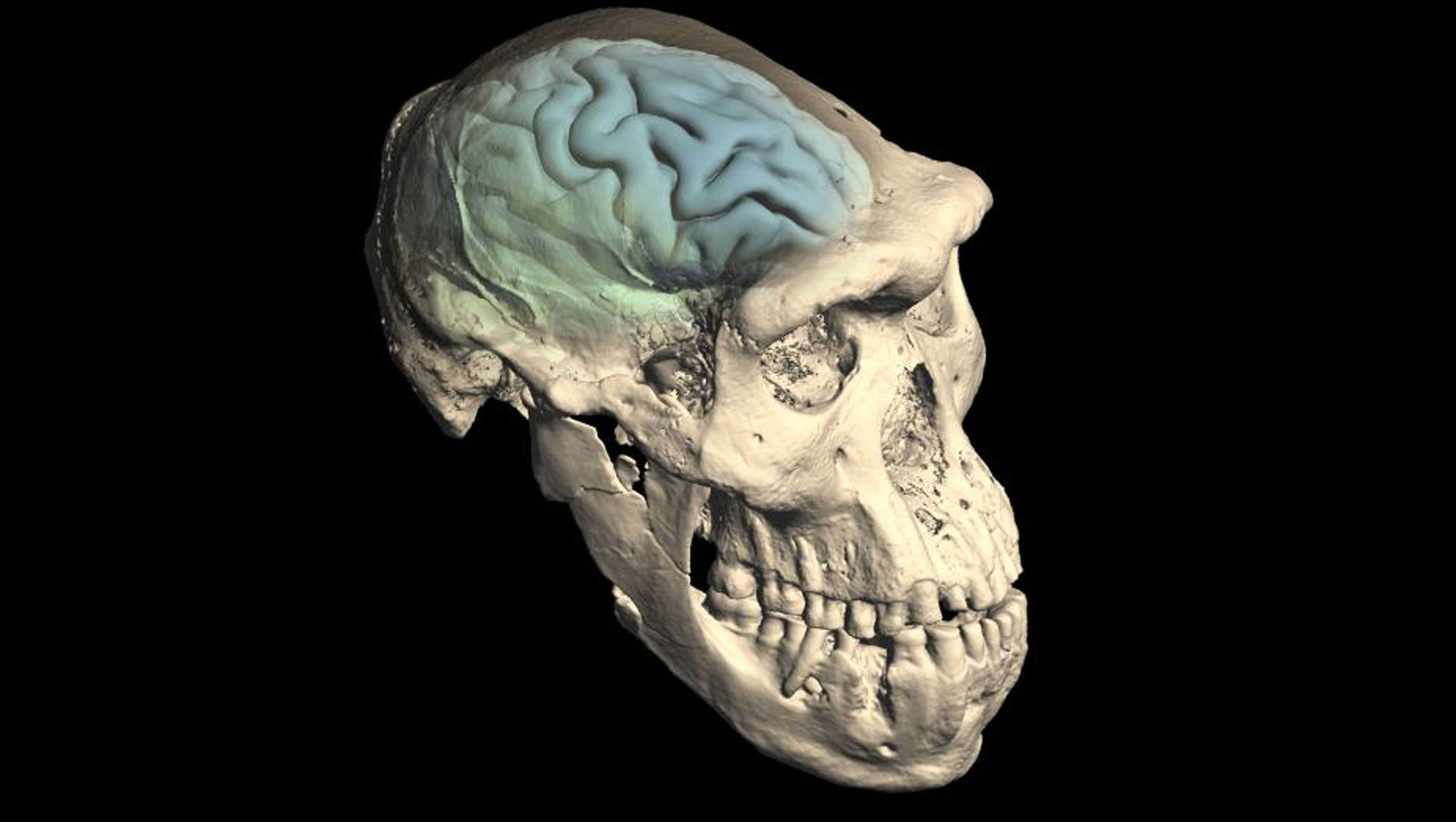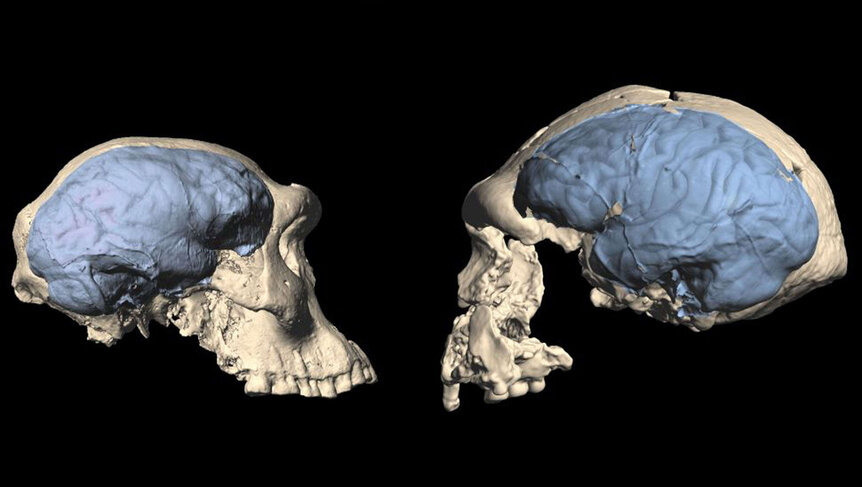Create a free profile to get unlimited access to exclusive videos, sweepstakes, and more!
Human ancestors still had monkey brains when they ventured out of Africa

How much did the human brain need to evolve for our species to take over the world? If you go back about 1.5 million years, it still had some evolving to do, as hard as that may be for us intelligent Homo sapiens to believe.
Some of our ancestors’ brains were more ape than human when they left Africa for the unknown wilds of Eurasia. The earliest human predecessors who travelled north and east were not even yet of the genus Homo, and even Homo erectus had nothing close to the brain we do. New research on ancient skulls has found that the earliest humans who reached Eurasia between 1.7 and 1.5 million years ago still had brains more like a great ape’s than what we call human.
Meaning, it took a million years after the first Homo species appeared for us to evolve the brains we are known for. Those brains would evolve in Africa. Paleoanthropologists Marcia Ponce de León and Christoph Zollikofer, who recently published a study in Science, do not necessarily believe that more primitive brains meant earlier hominids had no idea what they were doing when they made the epic journey to places that may have seemed worlds away.
“While scientists typically believed that having a modern human brain is a prerequisite to disperse into new continents, our data now show that venturing out of Africa did not require big brains, nor did it require modern brains,” Ponce de León and Zollikofer told SYFY WIRE. “This means that we should not underestimate the potential of 'ape-like' brains.”
The reserachers found out that the brains of these hominids were closer to those of great apes by studying CT scans of prehistoric endocasts, the area inside the skull where the brain, which does not fossilize easily, used to be. This is where they started to see evidence of the shift in brain morphology and organization that happened until humans evolved into Homo sapiens. They were looking for the region where the Broca’s area was. This organ is found in the left frontal lobe and is important to speaking and using tools. Brains are covered in gryi and sulci (folds and furrows) that sometimes leave imprints even if they decomposed millions of years ago.
Thorough CT scans of over 40 endocasts of species ranging from Australopithecus sediba to Homo erectus and Homo naledi, along with the endocasts of extant great apes and modern humans, the researchers were able to figure out what had been where in the hominid brain. Scans also showed what the shape and size of various areas. The precentral sulcus was the fold that would ultimately give away how the brain evolved physically. It defines the boundaries of the Broca’s area, found in the left frontal lobe of the brain.
This is consistent with more primitive and apelike brains. As the skulls moved forward in time, the furrow kept moving backwards. Ponce de León and Zollikofer saw this as a replay of human evolution.
“This indicates that the regions in front of that furrow expanded during evolution, ‘pushing’ the adjacent furrow backward in the brain. We take this as evidence of brain reorganization,” they said.
Though why our brains ended up with such a sophisticated frontal lobe remains a mystery, there are some possible ways that evolved in the distant past. Another study that examined the effect hunting had on the still-evolving hominid brain found that after human ancestors hunted large animals like mammoths and woolly rhinos to extinction, they needed to adapt to the sharper, quicker thinking needed to catch smaller and faster animals for food if they were to survive. This and other shifts possibly led to the reorganization of the human brain that would eventually become the defining factor of Homo sapiens.
Also, if the later Neanderthals were capable of language beyond the stereotypical “ooga booga”, as another study found, the ability to speak some form of language must have come from somewhere.
“We think that the evolutionary mechanism that “produced” the modern-looking frontal lobe is ‘brain-culture coevolution’,” Ponce de León and Zollikofer said. “This means that cultural innovation (such as some form of proto-language) paved the ground for structural innovation in the brain, which facilitated further cultural innovation.”
Human origins remain shrouded in mystery. There is still a gap in the fossil record for a million years between the oldest skulls studied by the team and the next oldest, and what we find next might literally blow our minds.




























